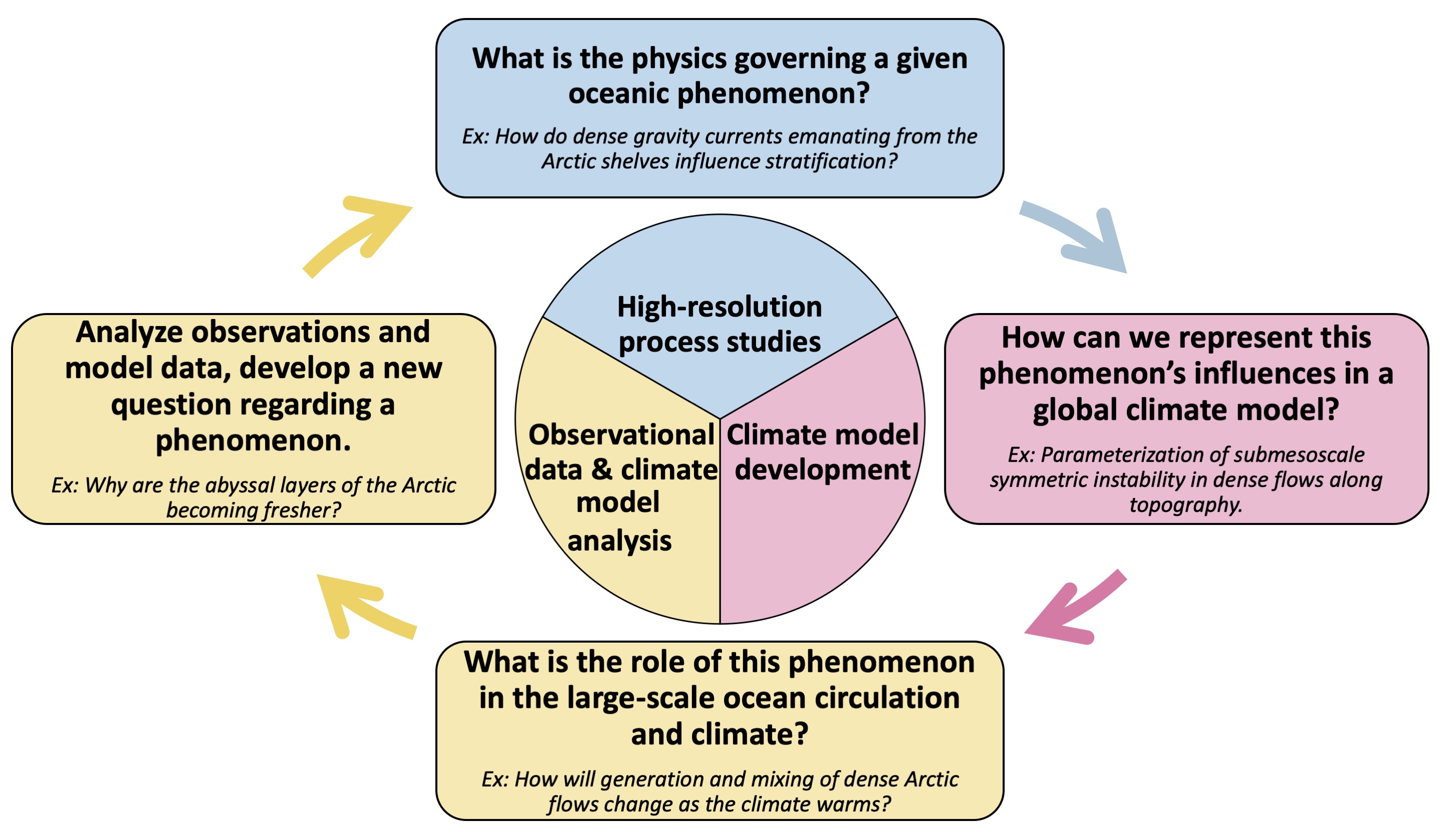Hello! I am an assistant professor in the Yale Department of Earth and Planetary Sciences and am part of the Atmosphere, Oceans, Climate Dynamics Group. Broadly, I am a physical oceanographer and climate modeler interested in ocean turbulence and its influences on the large-scale ocean state and climate. Before joining Yale in July of 2024, I was a researcher at [C]Worthy, an organization aimed at research and development of software tools supporting climate change mitigation efforts through marine Carbon Dioxide Removal (mCDR). I continue to collaborate with [C]Worthy on studying the influences of ocean turbulence on Ocean Alkalinity Enhancement, as well as working on regional ocean modeling to support mCDR. I was previously a postdoctoral researcher at the Courant Institute of Mathematical Sciences at New York University specializing in physical oceanography, ocean modelling, and geophysical fluid dynamics. I am a member of the Ocean Transport and Eddy Energy Climate Process Team (CPT). My research within the CPT aims to understand the vertical structure of mesoscale eddies in the ocean, and how to parameterize eddy influences in modern ocean models.
I completed my PhD in the Princeton Atmospheric and Oceanic Sciences Program and conducted research within the NOAA Geophysical Fluid Dynamics Laboratory. My graduate research focused on the dense water formation processes within the vast continental shelf regions of the Arctic Ocean. I studied the role of mesoscale and submesoscale turbulence in shaping how dense water flows undergo mixing and modify the density structure of the Arctic. Through performing high-resolution processes studies using the GFDL-MOM6 and the MITgcm, I identified submesoscale symmetric instability to be a dominant mechanism guiding mixing in dense Arctic flows. Based on the physical insights that I obtained from process studies, I developed a parameterization for deep-ocean symmetric instability that represents mixing in the bottom boundary layer fronts that terrain-following flows give rise to. I implemented and tested this parameterization within the GFDL-MOM6, and found that the scheme successfully captures water mass modification when the instabilities are not resolved by the model grid. In the final component of my PhD research, I turned to a global general circulation model (the GFDL-OM4) and considered the climatically-relevant question of how dense water formation and density structure of the Arctic will change as the region undergoes some of the most drastic warming on Earth.

Both my graduate and postdoctoral research have centered on the synthesis of high-resolution idealized modeling to understand the physics governing a given system, applying this understanding to improving coarser-resolution global climate models, and using global climate models to study the influences of small-scale phenomena on the global oceanic circulation.
Outside of research, I love rock climbing, hiking in the mountains, volunteering at animal shelters, and relaxing with my cats.

